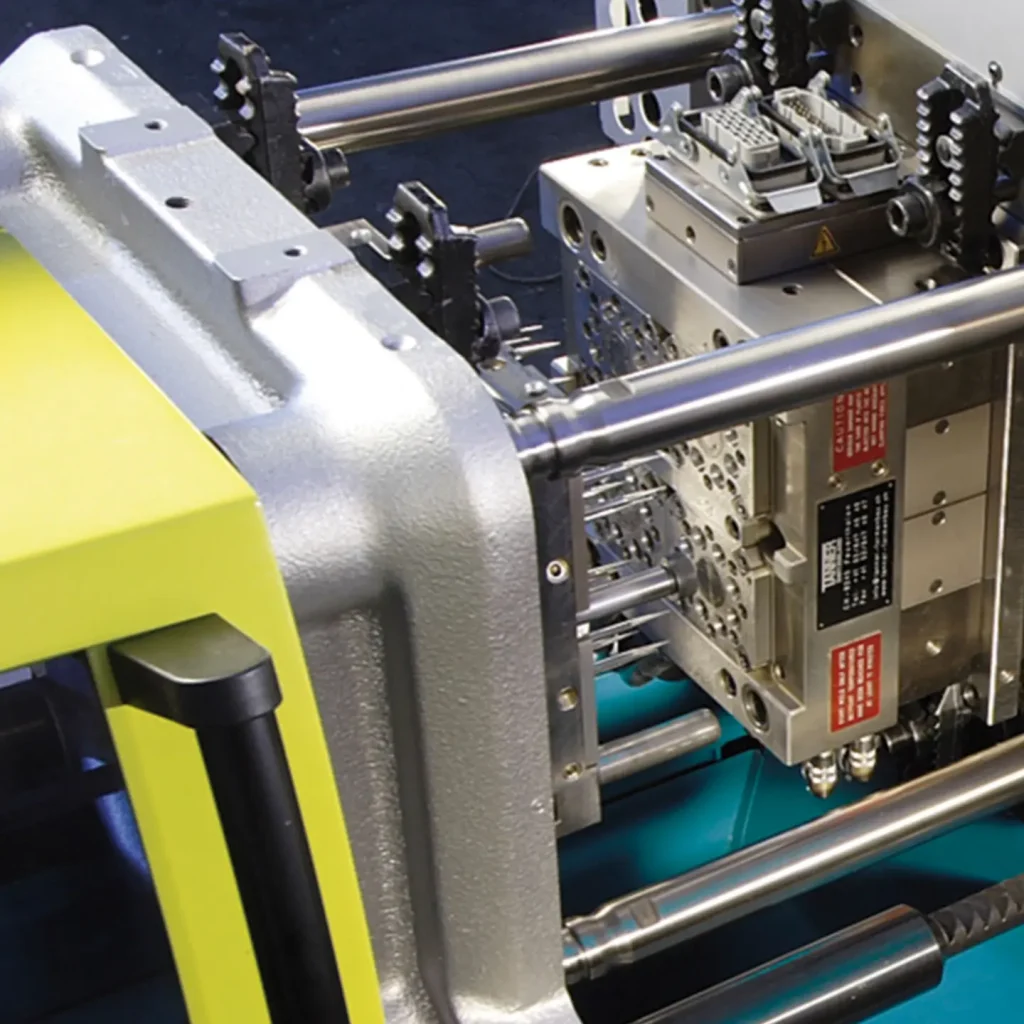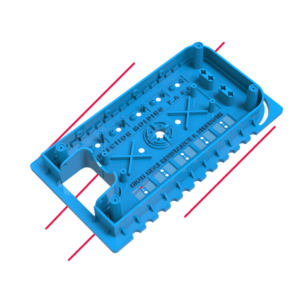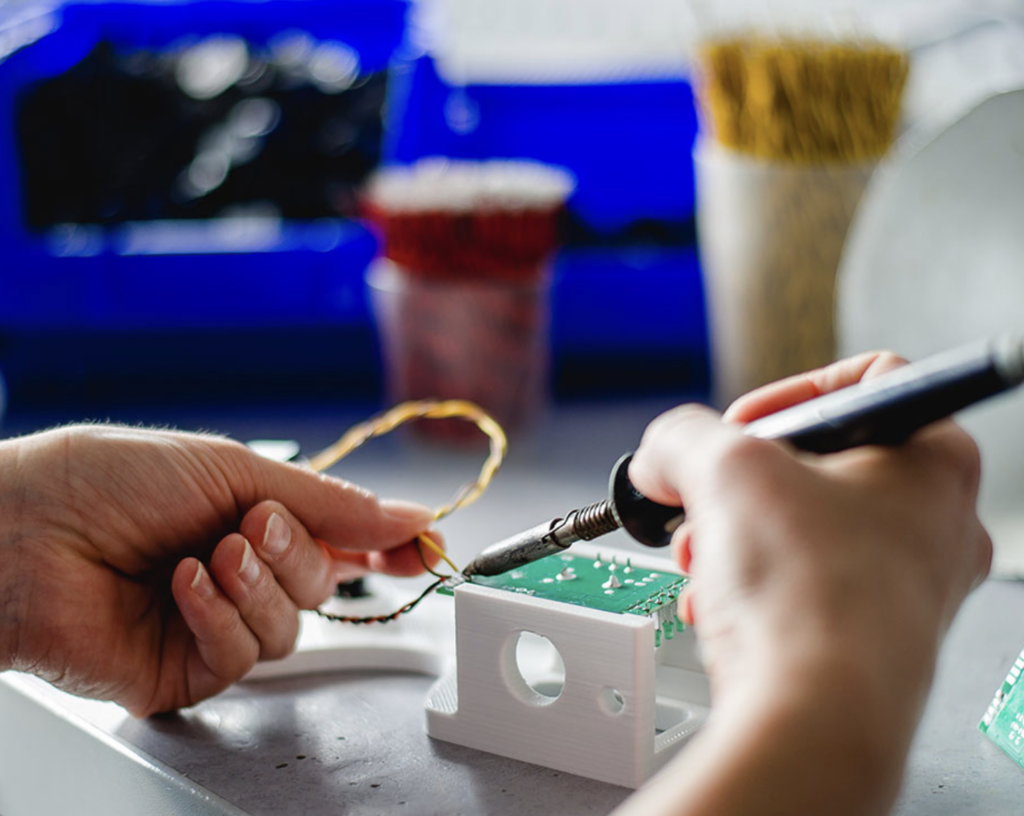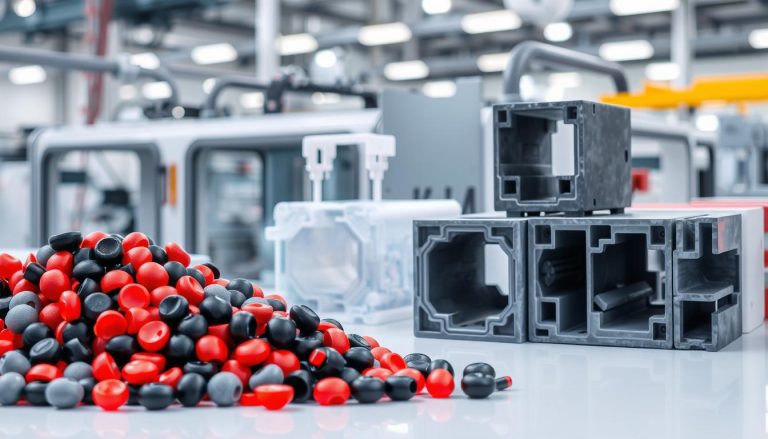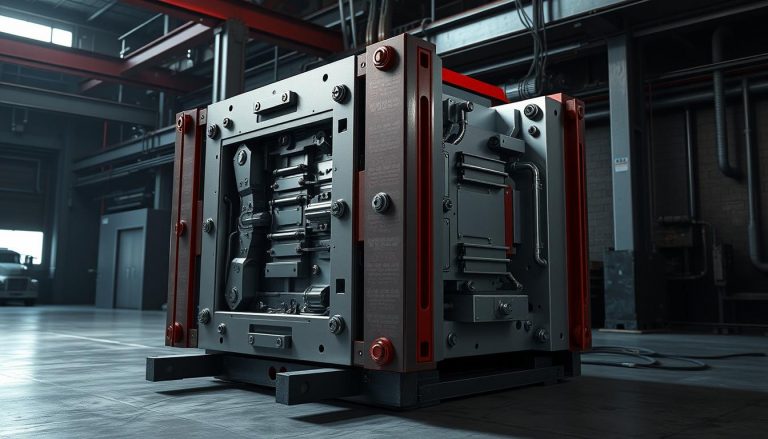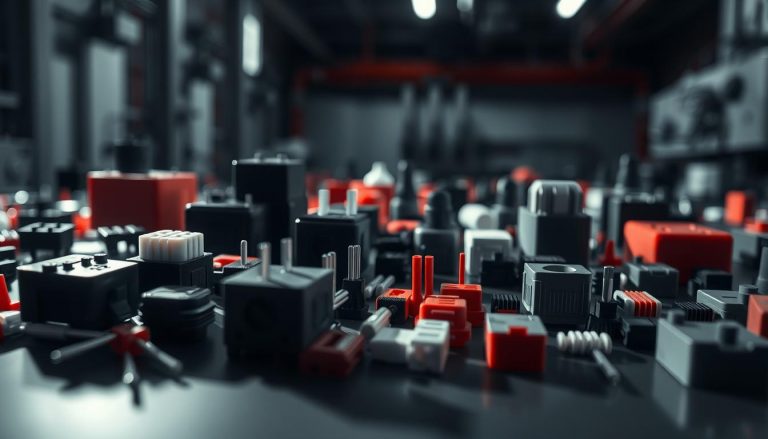Order fiber-reinforced plastic parts easily online
- First parts in a few days
- In-house mold making
- offer in a few hours
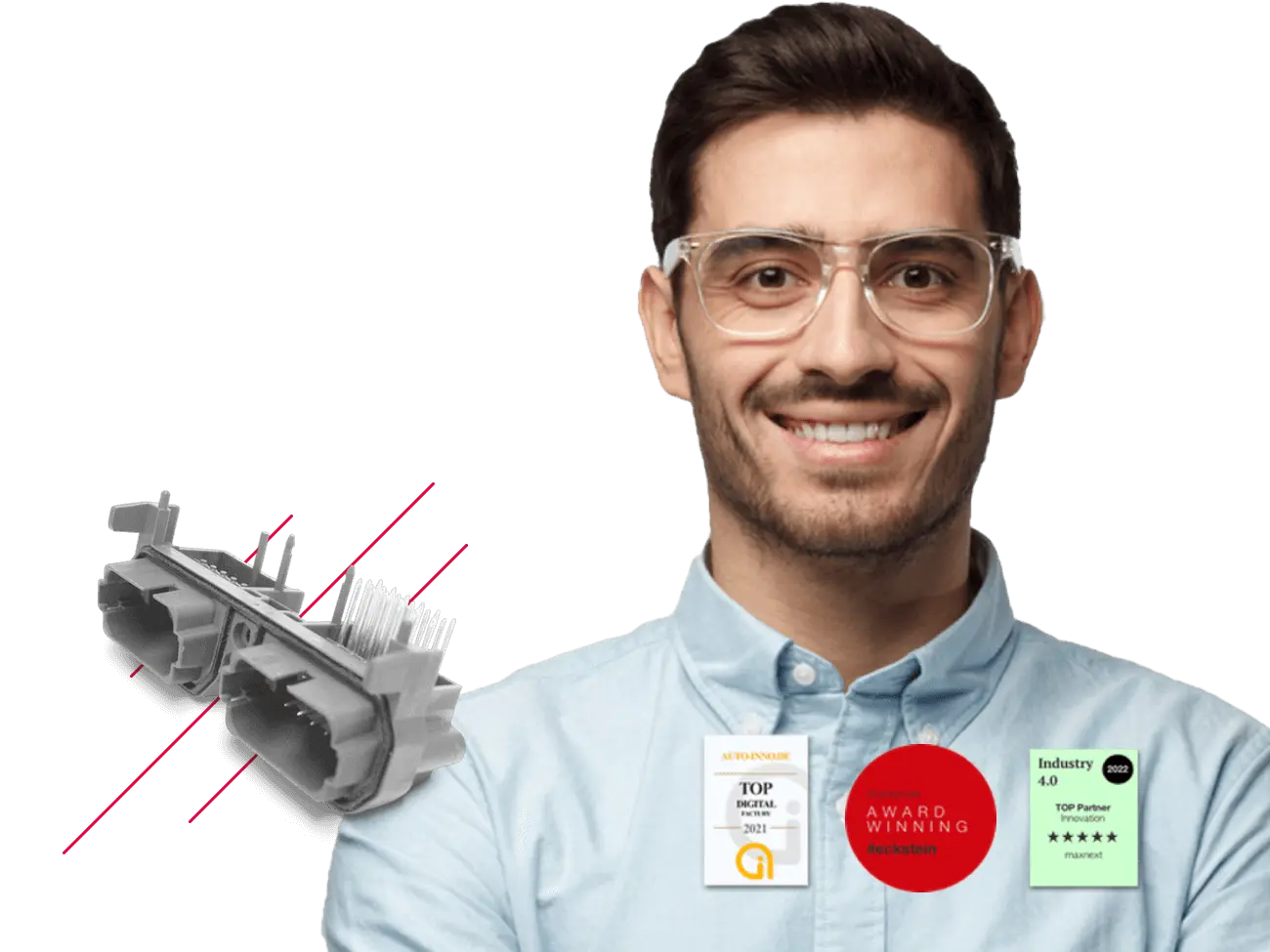

- First parts in a few days
- In-house mold making
- offer in a few hours
Are you looking for a reliable and experienced manufacturer of fibre-reinforced plastic parts?
maxnext specializes in the production of durable and compatible fiber-reinforced plastic parts that can withstand a wide range of conditions.
Our products meet the highest industry standards.
Contact us today to learn more about our fiber-reinforced plastics services!
Fibre-reinforced plastics (FRP) are a composite material consisting of reinforcing fibres embedded in a plastic matrix. The fibres can be made of glass, carbon or Kevlar, and the matrix is usually a thermosetting resin such as epoxy. Fibre-reinforced plastics are strong and lightweight, making them an ideal material for many applications.
One of the most common areas of application for fiber-reinforced plastics is in the automotive and electrical industries. Since plastic makes it possible to protect and insulate electronics from external influences, fiber-reinforced plastics are used extensively for automotive parts and electrical components. In addition, fiber-reinforced plastics are often used in the marine industry due to their resistance to salt water and corrosive chemicals.
One of the main advantages of fiber-reinforced plastics is their high strength-to-weight ratio, making them ideal for use in many industries. Additionally, fiber-reinforced plastics are often more resistant to heat, chemicals, and abrasion than traditional plastics. Thanks to their strength and versatility, it is likely that fiber-reinforced plastics will continue to find new and innovative applications in a wide range of industries.
Fiber-reinforced plastics are a type of composite material that combines the benefits of fibers and plastics. The fibers provide strength and rigidity, while the plastic matrix helps protect the fibers from damage and creates a smoother surface. Fiber-reinforced plastics can be used in a wide variety of applications and one of the main advantages of fiber-reinforced plastics is their weight. They are much lighter than metals, making them ideal for products that need to be lightweight but strong. In addition, fiber-reinforced plastics are corrosion-resistant and have good thermal and acoustic insulation properties.
In addition, fiber-reinforced plastics are halogen-free and non-toxic, making them safer to use than other types of plastic. They also have better thermal stability, meaning they can withstand higher temperatures without deforming or melting. Additionally, fiber-reinforced plastics have higher tracking resistance and dielectric strength, making them more resistant to electrical currents. Finally, fiber-reinforced plastics lose virtually no mechanical properties, meaning they retain their strength and elasticity even under extreme conditions. All of these factors make fiber-reinforced plastics an increasingly popular choice for a wide range of applications.
The most common type of fiber used is glass, but there are other options such as carbon, Kevlar, and ceramic. The type of fiber used affects the strength and durability of the material. Ultimately, the type of fiber used depends on the specific application for the fiber reinforced plastic.
Fiber reinforced plastics are becoming increasingly popular for electrical components due to their light weight, durability and resistance to heat and electrical interference. Maxnext is a leading manufacturer of fiber reinforced plastic parts and has over a decade of experience in this field. We offer a variety of injection molding processes to meet your needs including regular 1K injection molding, assembly injection molding from 2 single molds and multi-component injection molding (2K injection molding). We also offer blow molding for plastic hollow parts. Our products feature absolute tolerance compliance, making them perfect for critical applications. Contact us today to learn more about our capabilities or to request a quote.
Anyone working in the electrical industry knows that space is always at a premium. This is especially true for portable devices such as laptops and cell phones where every square millimeter counts. This has spurred the development of lighter and stronger materials such as fiber-reinforced plastic, which is strong yet lightweight, making it ideal for use in electrical applications. Fiber-reinforced plastics are also heat and chemical resistant, making them an ideal choice for use in harsh environments. Additionally, fiber-reinforced plastics can be molded into complex shapes, making them perfect for use in the electrical industry.
Injection molding is a popular manufacturing process that can be used to produce many different types of plastic parts. In this process, molten plastic is injected into a mold where it cools and takes the shape of the mold cavity. Injection molded parts can have a very complex design and are often used for electrical components and other applications where durability and strength are critical.
One of the biggest advantages of injection molding is that the parts can be manufactured with virtually no restrictions on size or shape. This makes it an ideal manufacturing process for electrical components, which often need to be very delicate. In addition, injection molded parts are usually very strong and stable because they are made from one piece. This means fewer parts need to be assembled, which can often result in less durability. Overall, injection molding is a versatile manufacturing process that offers many advantages for electrical components and other applications.
Maxnext is a leading manufacturer of fiber-reinforced plastic parts using the injection molding process. We have years of experience in the development and production of these parts and are able to meet even the most stringent tolerance requirements. In addition, we offer a wide range of services, from prototyping to series production. If you are looking for an experienced partner for the development and production of fiber-reinforced plastics, Maxnext is the perfect choice.
If you are looking for an experienced manufacturer of fiber-reinforced plastic parts, Maxnext is the right place for you. With modern injection molding machines that operate in the range of 180 kN to 3,200 kN clamping force and the latest generation of controls, Maxnext is able to offer a comprehensive range of parts in the range from less than 0.1g to around 800g. In addition, Maxnext can offer you technically sophisticated solutions for the combination of different materials in the 2-component injection molding process (2K). Whatever your needs, Maxnext has the solution for you.
With the increasing demand for more environmentally friendly products, the need for better flame retardants has also increased. Fiber-reinforced plastics are a promising option. With a glass fiber content of up to 45%, they pass all fire tests with flying colors and even outperform the very effective halogenated flame retardants. In the UL 94 flame test, fiber-reinforced plastics achieve the best possible rating of V-0. This corresponds to the flame extinguishing within 10 seconds and an afterglow of a maximum of 30 seconds.
Fiber-reinforced plastics are therefore not only environmentally friendly, but also extremely effective in preventing fires. This makes them ideal for use in a wide range of products, from electronic devices to medical technology.
As the world increasingly moves towards electrification, the need for flame-retardant materials is greater than ever. Fiber-reinforced plastics (FRPs) are a promising way to meet this need. Fiber-reinforced plastics are widely used in a variety of applications that require flame and fire protection, such as electromobility, automotive, public transportation, aircraft, energy/power electronics, medical devices, and home electronics. Additionally, fiber-reinforced plastics can be used as insulators and for integrating assemblies/semiconductor boards into plastic components. As the world becomes increasingly aware of the need for environmental protection, fiber-reinforced plastics are likely to play an important role in flame and fire protection.
At Maxnext, we specialize in fiber-reinforced plastic injection molding technology. We offer customized solutions based on your specific needs and requirements. We work closely with our customers to ensure the highest quality and safety for their components. The usual process for ordering fiber-reinforced plastic parts from Maxnext includes the following steps:
- Construction: design drawing and determination of the manufacturing process
- Prototype: Production, Measurement and Correction
- Series production: small or large series
The process for ordering fiber-reinforced plastic parts at Maxnext is as follows: First, a design drawing is created and the manufacturing process is determined. Based on this information, our team of experts develops a prototype. Once the prototype is ready, it is measured and corrections are made if necessary. Finally, we move on to series production, in small or large quantities, depending on the customer's needs.
Throughout the process, our focus is on delivering the highest quality parts. We are confident that we can meet or exceed your expectations. Contact us today to find out more about what we can do for you.
Why maxnext?
The dream of every buyer and entrepreneur. Whether simple components or complex assemblies in injection moulding.
Fast, personal communication & best price directly in the first offer.
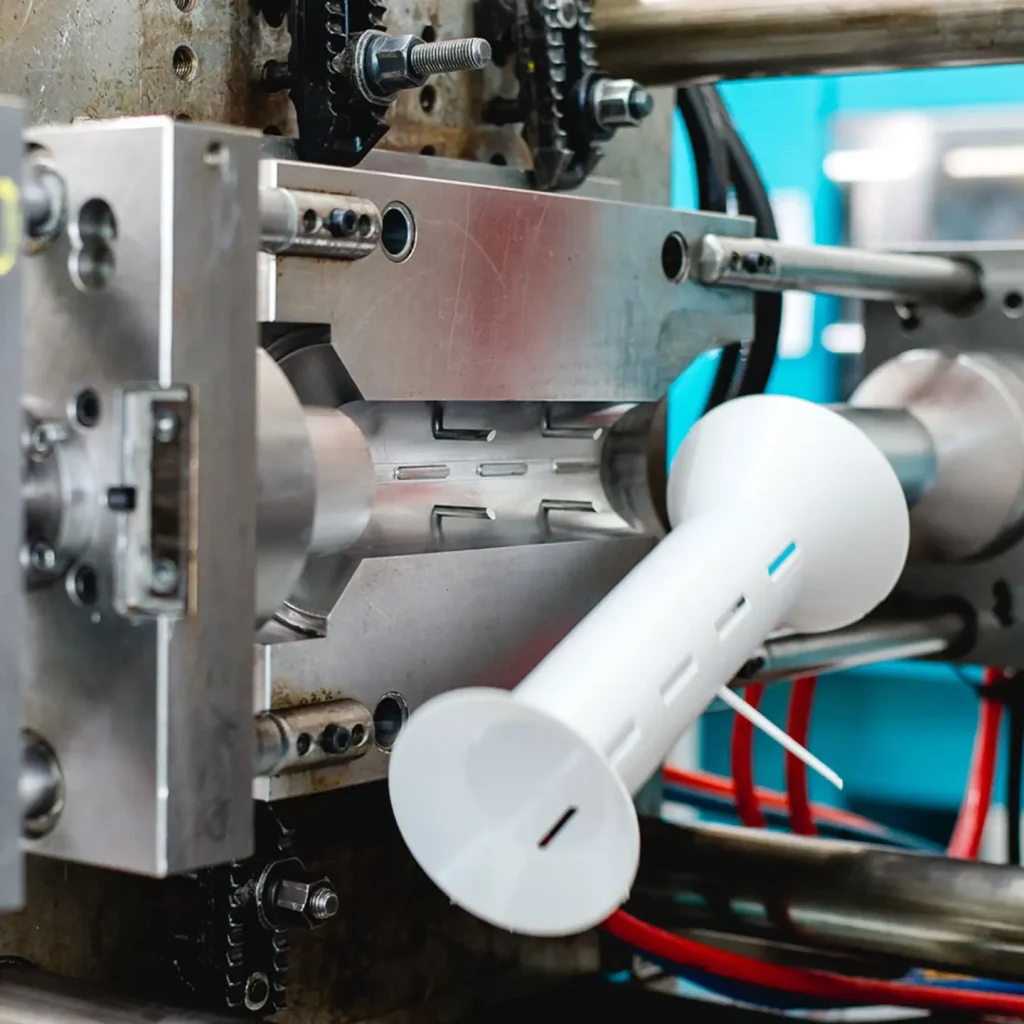
small and large series
plastic parts for the electrical industry
Fast & easy!
Maxnext is the brand maker of KSE Kunststoff. The result is precisely fitting fibre-reinforced plastic parts in record time.
We find the most economical solution for the production of technical plastic parts. From development to series production. From simple components to complex assemblies.
Let’s get it started!
“Our goal was to optimize the existing plastic housings of our access points. The result: We are now independent & the purchase has become more economical.”

Winfried Zangerle
CEO @ germanhotspot.de
“Quick implementation of our product design. We never thought it would make such an extreme difference to our sales. Thank you!”

André Becker
CEO @ expertenloft
1000+ successful projects per year!
- Simple & combined assemblies
- The partner for the e-industry
- offer in a few hours
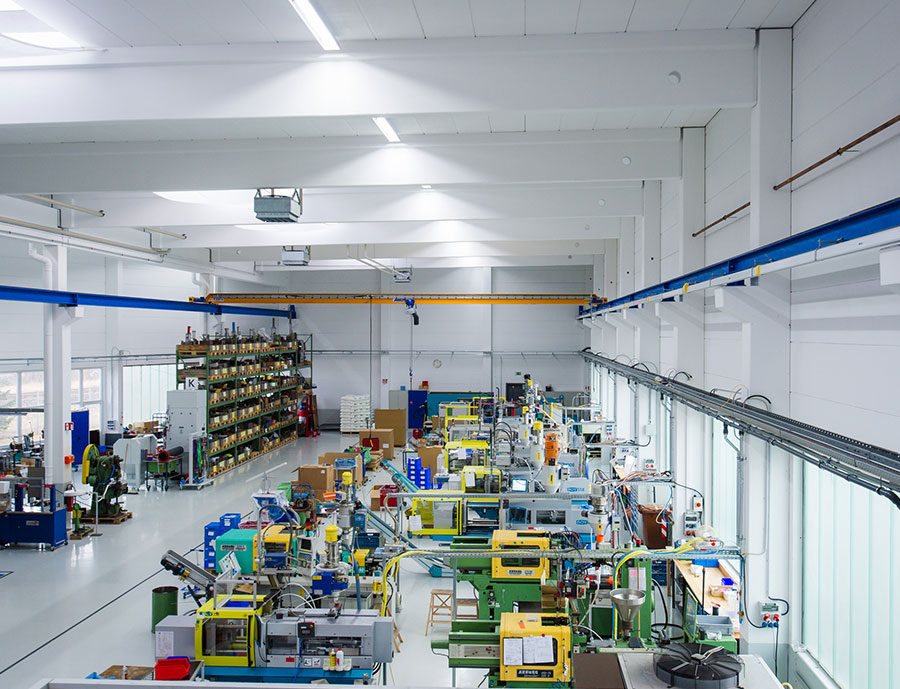
-
Technical plastic parts
-
fiber-reinforced components
-
overmolding of conductor materials
-
assembly of components
Plastic parts for electronics usually have to meet certain requirements to ensure the electrical properties and performance of the electronic devices. Some of these requirements are:
Insulation: Plastic parts must be electrically insulating to isolate electric current and electric fields from one part of the appliance to another and to prevent electric shock and short circuits.
Heat resistance: Plastic parts must be able to withstand the high temperatures that can be generated by the operation of electronic devices without impairing their electrical properties or mechanical characteristics.
Chemical resistance: Plastic parts must be resistant to chemicals that may be present in the environment of the appliance to prevent ageing and degradation.
Fire behaviour: Plastic parts must also have good fire behaviour to ensure user safety and prevent damage to the appliance and its surroundings.
Dielectric strength : Plastic parts must also have a high dielectric strength to ensure user safety and prevent damage to the appliance and its surroundings.
UV resistance: If the plastic parts are used outdoors, they must be resistant to UV rays to prevent ageing and degradation.
Read more: https://de.wikipedia.org/wiki/Faser-Kunststoff-Verbund
Ideal for use with electricity.
Perfect insulating properties and fire protection thanks to fiber reinforcement. More about flame retardants in plastics.
overmolding of conductor materials
When overmolding metal parts with plastic, it is important to consider a variety of factors to ensure a high quality final product. One of the most important aspects is choosing the right plastic that is suitable for the specific requirements of the part. Factors such as strength, temperature resistance, chemical resistance and electrical properties must be considered.
Another important factor is the design of the part and the molds used in its manufacture. The design must be such that there is sufficient wall thickness to ensure the strength of the part while minimizing the risk of voids. The molds must also be designed to ensure even distribution of the plastic to produce consistent results.
Overmolding metal parts with plastic can be challenging because it requires precise control of temperature and pressure. The metal parts must be heated to a high enough temperature to ensure the plastic adheres well, but not too high to damage the material. The pressure applied to the material must also be precisely controlled to ensure the plastic material is evenly distributed.
Additionally, overmolding metal parts with plastic requires a high level of experience and expertise to ensure the quality of the final product. An experienced injection molder will be able to understand the intricacies of the process and make adjustments to achieve the best possible results.
Overall, overmolding metal parts with plastic is a challenging task that requires a deep understanding of the process, experience and expertise. However, when done correctly, it can result in high-quality end products that meet the specific requirements of the application.
assembly & device construction
In the field of equipment construction, we manufacture functional and mechanical assemblies. To do this, we complete the plastic items produced for you with additional components such as circuit boards, switches, motors and cables, the purchase of which and the scheduling of which we are happy to take over for you. Final inspections, functional tests and serial number management are of course documented in a traceable manner.
Special requests and individual designs are possible at any time!
certifications
….. we have that too. In our factory near Augsburg we work according to DIN ISO without being certified. That saves money.
In unserem Spritzgusswerk bei Nürnberg sind wir zertifiziert nach DIN ISO 9001 & 14001: Ideal für alle, die darauf wert legen.

